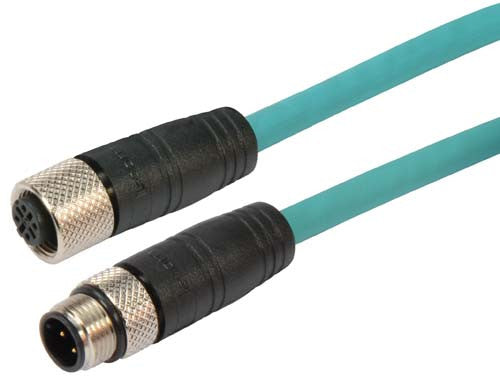5 Reasons for choosing M12 Cables in Harsh Environments

It's fairly widely known that RJ45 plug connectors are the most popular connection technology for Ethernet systems, but for Ethernet networks deployed in harsh outdoor or industrial environments, M12 plug connectors are often a better choice for many applications. Here are some of the reasons why we think M12 connectors are a more attractive option:
- IP67 or IP68-rated – An IP67 rating tells you that the cable is completely protected from dust and temporary immersion between 12 cm and 1m. A rating of IP68 means the cable is totally protected from dust and long periods of immersion under pressure. Both of these ratings are absolutely essential for cables used in harsh industrial environments.
- Compact Design – Even though M12 connectors are made to withstand rugged conditions, they still maintain a compact design which is perfect for saving space in often crowded enclosures and cabinets.
- Reliable Connection – Despite their small size, M12 connectors are surprisingly strong and sturdy and deliver a reliable connection even when exposed to severe shock or vibration.
- Two Pin Configurations – M12 Ethernet connectors are offered in both 4-pin and 8-pin configurations. Four-pin M12 connectors with D-coding are perfectly suited for fast Ethernet transmission. Eight-pin M12 connectors are usually A-coded and can deliver higher transmission rates such as Gigabit Ethernet. L-com also offers 8-pin, X-coded M12 cables that support Category 6a applications and are rated for 10Gbps speeds.
- POE – M12 cables and connectors can be used for Power over Ethernet applications. The four-pin connectors can be used for type-1 transmission where supply, voltage and data are transmitted together. Eight-pin configurations can deliver type-2 power with the two spare wire pairs being used to transmit the supply voltage separately.
Our complete line of L-Com M12 Ethernet cables include X-code, A-code and D-code versions that are IP67/68/69K-rated, high-flex, shielded and resistant to oil, weld splatter, and damaging UV rays.
